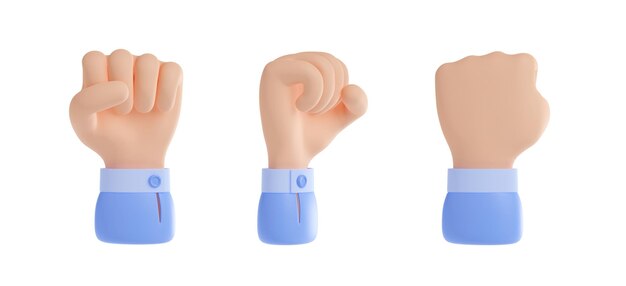
Launching a product can feel like an adventurous journey filled with ups and downs. As a Product Owner at Revolut, I experienced this firsthand while transforming an idea into a credit product that spread across borders with thousands of customers. Despite the supportive environment of a tech giant, I faced challenges similar to those any founder would, particularly in the daunting quest for product-market fit.
How do you know if your product is feasible and ready to scale?
After finishing my product discovery, defining value propositions, and launching the Minimum Viable Product (MVP) to real customers, there was an initial wave of enthusiasm. Feedback was positive, and everything seemed set for major investment and global expansion. However, a performance gap between our launch countries (Country A and Country B) made me cautious about the right time to scale in each market.
In the world of product development, “Product-Market Fit” is the gold standard. It means your product successfully solves a problem for a specific market segment in a repeatable and scalable way.
Initially, I struggled to break down this concept or explain why we did or didn’t have a product-market fit. This led to opinion-based decisions and anecdotal evidence driving our discussions. I decided to bring structure to this process and adapt existing concepts to our credit products.
My product, unlike standard ones in our credit lineup, involved many hypotheses about the market and value propositions. I took a risk and systematized the search for product-market fit using our product as a test case. This framework, later extended to products like credit cards and personal loans, proved beneficial for us and could inspire other credit product managers.
I started by asking key questions during the MVP stage:
1. Is the target market present?
2. Is the problem significant enough for customers to pay for our solution?
3. Is our business model repeatable and profitable?
To answer these, I created metrics for continuously monitoring product-market fit and the impact of any changes.
Product-Market Fit Metrics
1. Is the market there?
We began by validating our market. We used surveys and internal customer segmentation to understand our audience deeply. The Sean Ellis test helped measure users’ emotional connections to our product. Segmentation data like age, gender, income, and product usage provided insights.
Assumptions: Defined our target group broadly across both countries.
Learnings: Market research in Country B shattered our initial assumptions. Our main audience turned out to be liquidity-focused, medium/medium-income millennials, not the convenience-driven group we initially targeted. This led us to adjust our value proposition and risk criteria.
2. Are we solving the problem effectively for our target customers?
The Net Promoter Score (NPS) became our key metric for customer satisfaction. Customer feedback gathered alongside NPS scores unveiled key insights. Simplicity, flexibility, and transparency became essential parts of our value proposition.
Assumptions: Expected similar performance across both countries.
Learnings: Country A had high satisfaction scores, but Country B showed lower enthusiasm. Feedback highlighted the need to tweak our value proposition and improve features.
3. Can we attract customers at a reasonable cost?
The Cost of Acquiring a Customer (CAC) was a crucial metric, impacting the LTV/CAC ratio. We monitored credit-specific funnel metrics to understand the customer acquisition process.
Assumptions: Anticipated high application and approval rates.
Learnings: Faced discrepancies in approval and application rates, particularly in Country B. This led us to refine our acquisition strategies.
4. What are the product usage patterns?
We analyzed metrics like Spend % of limit and Early repayment rates to understand user behavior. Country-specific behaviors necessitated customized approaches.
Assumptions: Expected high utilization of BNPL limits.
Learnings: Country A had a mix of active and dormant users, whereas Country B showed more conservative usage patterns, affecting revenue generation.
5. Is the product sticky?
To sustain recurring revenue, it’s crucial that the product retains users. Metrics like Monthly Active Participants (MAP) and Daily Active Participants (DAP) helped us measure engagement and retention.
Assumptions: Expected steady retention over two years.
Learnings: Dormant users were a challenge, but active users displayed consistent purchasing behavior in both countries. We aimed to engage new users and encourage repeat usage.
6. Does the business model make sense?
The aggregated metrics were combined into the LTV/CAC ratio to determine overall product viability. This ratio indicated whether we could scale the product profitably.
Assumptions: Similar unit economics in both countries at the MVP stage.
Learnings: Country A exceeded thresholds, promising good returns. Conversely, Country B’s ratios hovered around break-even, prompting a reassessment of the product and business model there.
Growth Potential
Our framework allowed us to test growth hypotheses before scaling. Metrics such as New sign-up growth % and Product penetration % were vital for assessing future expansion.
Setting Up Targets
Setting targets relied on a mix of country practices, product practices, cross-industry benchmarks, and individual product designs. This diverse approach helped us tailor targets specific to our products and market conditions.
Framework Application
The framework became a regular part of our routine, ensuring poorly performing products were reevaluated and successful ones received increased support. This process taught me the challenge of using a one-size-fits-all approach across different markets.
The biggest lesson was the complexity of a Global MVP. What worked in Country A often fell short in Country B, underscoring the need for market-specific strategies when launching new products.